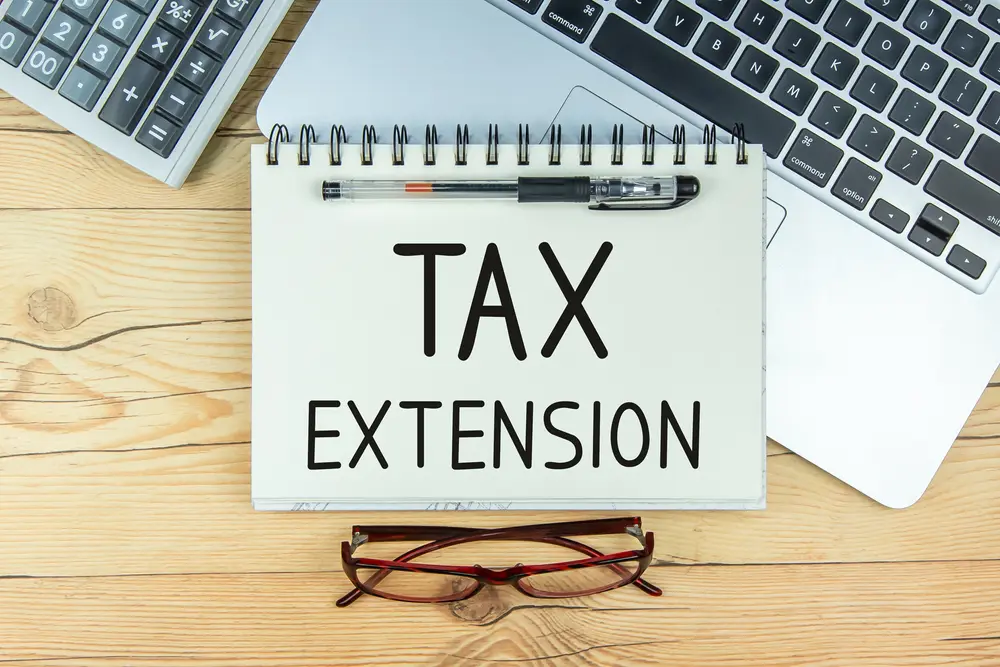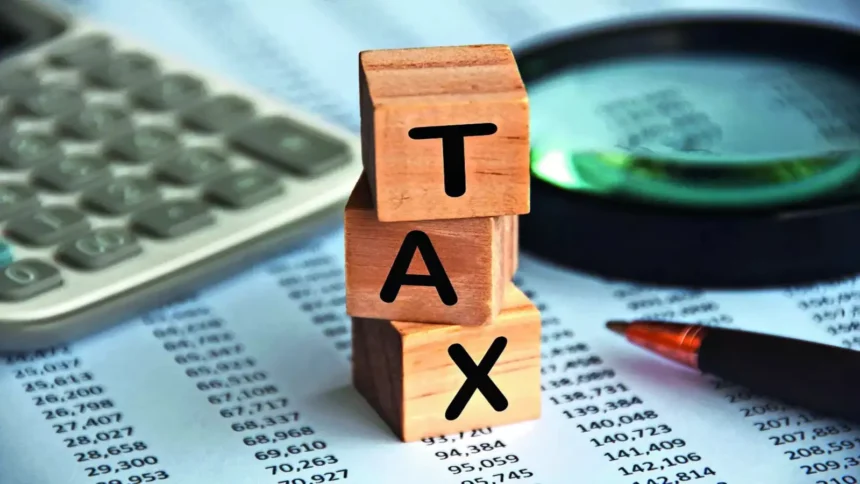Filing taxes can be a stressful process, file for tax extension, especially if you’re not fully prepared when Tax Day rolls around. If you’re running out of time to gather documents or need more time to consult a tax professional, knowing how to file for a tax extension can be a game-changer. In this guide, we’ll walk you through everything you need to know to file a tax extension for 2025, including important deadlines, forms, and tips to avoid penalties.
What Is a Tax Extension and Why Should You File One?

A tax extension gives you extra time—typically six months—to file your tax return with the IRS. For the 2025 tax year, this means that instead of filing by the usual April 15, 2025 deadline, you could extend your filing date to October 15, 2025. While this sounds like a great way to buy some breathing room, it’s important to understand that filing an extension does not delay your payment. You must still estimate and pay your owed taxes by April 15 to avoid interest or penalties.
There are many reasons why someone might need to file an extension. Maybe you’re waiting on important financial documents like W-2s or 1099s, or perhaps you’ve encountered unexpected life events—medical issues, family emergencies, or travel—that prevent you from filing on time. Business owners, gig workers, and self-employed individuals often require more time due to the complexity of their returns.
When Is the Last Day to File Taxes in 2025?
For most taxpayers in the United States, Tax Day 2025 falls on Tuesday, April 15, 2025. This is the official deadline to file taxes or to submit your tax extension form. If you’re asking, “Can I file my taxes on April 15?” the answer is yes—you can file on that day. However, it’s not advisable to wait until the last minute. Technical glitches, internet outages, or long wait times with tax software platforms can all cause unnecessary stress.
Many people also wonder, “When is the last day to file taxes 2025 if I request an extension?” If your extension is approved, you’ll have until October 15, 2025, to file your federal return. But again, the deadline to pay any taxes owed remains April 15. If you’re unsure about the specific timing, remember that when are taxes due 2025 time usually refers to midnight (local time) on April 15.
How to File for Tax Extension in 2025
Filing for a tax extension is a fairly simple process. The IRS provides Form 4868, the official tax extension form, which gives you additional time to file. Here’s how to file a tax extension:
E-File Through the IRS or Tax Software
The easiest way to file an extension is through the IRS Free File system, which is available to taxpayers making under a certain income threshold. Alternatively, major tax preparation software providers such as TurboTax, H&R Block, and TaxAct allow you to file your extension electronically, sometimes without cost.
Submit a Paper Form
If you prefer not to file online, you can download Form 4868 from the IRS website, fill it out manually, and mail it to the appropriate IRS address listed in the form’s instructions.
Make an Estimated Tax Payment
You can also file for tax extension automatically by making a tax payment through the IRS website and selecting “extension” as the reason for payment. This method is helpful for those who already know they owe money and want to avoid late payment penalties.
No matter which route you choose, make sure you complete it by April 15, 2025, to ensure you avoid penalties and secure your extended deadline.
State Extensions: Don’t Forget the Franchise Tax Board (FTB)

If you’re a California resident, you may also need to file a separate extension with the Franchise Tax Board (FTB). The FTB oversees state income taxes in California and has its own rules, deadlines, and tax forms. While many states automatically accept federal extensions, it’s crucial to double-check with your state’s tax agency to stay compliant.
The FTB typically offers an automatic extension to file, but you must still pay your state taxes by the original April deadline. Visit the California FTB website for the most accurate and updated information.
Can You File Taxes on April 15?
Yes, you can still file taxes on April 15, and that’s when many people do. But keep in mind that electronic traffic on tax software platforms and the IRS site can be heavy, causing possible delays. If you’re submitting your return or tax extension form electronically, make sure you receive confirmation of submission before midnight local time on April 15.
Can You File Taxes for Free?
Absolutely. Many taxpayers are eligible to file taxes for free through the IRS Free File program. This service partners with several tax software providers to offer no-cost federal tax return filing for individuals or families earning below a certain income threshold—often around $73,000 annually.
There are also numerous platforms that allow you to file an extension for taxes free of charge, especially if your income is modest or you qualify for simplified filing.
How to File an Extension for Taxes After April 15
If you missed the April 15 deadline to file an extension, don’t panic—but do act quickly. Late extensions are generally not accepted, and your return will be considered late, which can lead to failure-to-file penalties. In this case, the best move is to file your tax return as soon as possible and pay any taxes owed, even if you can’t afford the full amount.
IRS Payment Plans: What If You Can’t Pay?
If you owe money and can’t pay your taxes by the deadline, consider applying for an IRS payment plan. The IRS offers both short-term and long-term payment arrangements depending on the amount you owe. Applying for a payment plan helps you avoid more severe penalties and keeps you in good standing with the IRS.
You can set up a payment plan online via the IRS website, and it usually takes only a few minutes. However, keep in mind that interest continues to accrue until the balance is paid in full.
What Is Form 1040 and How Does It Relate to Filing Extensions?
Form 1040 is the standard individual tax return form that every U.S. taxpayer uses to report income, deductions, and credits. When you file a tax extension using Form 4868, you’re essentially telling the IRS you need more time to complete and submit your Form 1040.
Just because you’re granted an extension to file your Form 1040 doesn’t mean you can delay paying your taxes. Make sure to estimate your tax bill accurately and pay any amount due by April 15 to avoid penalties.
What Is Tax Day?
Tax Day refers to the deadline to file your federal income taxes each year. For 2025, Tax Day falls on April 15. It’s a critical date for taxpayers across the country. Missing it without filing an extension can lead to late filing penalties of up to 5% per month on unpaid taxes, so it’s vital to mark your calendar.
Many people Google, “What is tax day?” or “When is tax day 2025?”—the answer is straightforward. Unless changed by federal holiday adjustments, it remains April 15, 2025.
How Long Is a Tax Extension Good For?
If you successfully file a tax extension by the April deadline, you get an additional six months to file your return. This extends your deadline to October 15, 2025. This grace period gives you ample time to gather necessary forms, organize deductions, and work with a tax professional if needed.
Keep in mind, however, that no additional extensions are granted beyond this period unless under special circumstances approved by the IRS.
Benefits of Filing an Extension

There are several advantages to filing a tax extension, especially if your tax situation is complex or uncertain. First, it reduces the risk of filing a rushed or inaccurate return, which could lead to audits or amended returns. Second, it gives you more time to organize records, find missing documents, or claim overlooked deductions.
Additionally, filing an extension may help you avoid late-filing penalties, assuming you make a good-faith estimate of taxes owed and submit payment by the April 15 deadline.
Final Thoughts: File Early, Stay Compliant
Whether you’re running a business, working freelance, or just feeling overwhelmed with paperwork, knowing how to file tax extension correctly can save you a great deal of stress. Don’t wait until the last minute to decide—evaluate your situation early and take the necessary steps before the tax filing deadline 2025 arrives.
Remember, an extension helps with time to file but not time to pay. Stay proactive, use online tools, and consider speaking with a tax advisor if you have doubts.
Frequently Asked Questions (FAQs)
Q1. How do I file for a tax extension in 2025?
Use IRS Form 4868 and file it online via tax software or mail it in by April 15, 2025.
Q2. What happens if I miss the April 15 deadline without an extension?
You may face penalties and interest. It’s best to file and pay as soon as possible.
Q3. Is there a fee to file an extension?
No, filing an extension is free. However, you must still pay any estimated tax due.
Q4. Can I file my taxes on April 15th?
Yes, but avoid last-minute submissions to reduce the risk of delays or errors.
Q5. What is the deadline to file taxes with an extension?
With an approved extension, you have until October 15, 2025, to file your tax return.
Q6. How do I check if my extension was accepted?
If you file electronically, you’ll receive an IRS confirmation email. Keep it for your records.
Q7. What’s the benefit of filing an extension instead of rushing?
You get more time to accurately complete your return, potentially reducing audit risk or the need for corrections.
📢 Stay ahead of your deadlines and financial obligations—subscribe to StartupShorts.com for more expert tax tips, small business guides, and money-saving insights tailored to U.S. entrepreneurs and taxpayers.





